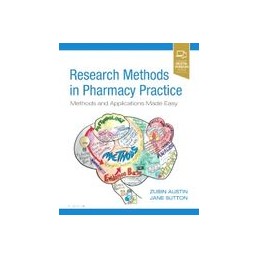- Reduced price

Order to parcel locker

easy pay


 Delivery policy
Delivery policy
Choose Paczkomat Inpost, Orlen Paczka, DHL, DPD or Poczta Polska. Click for more details
 Security policy
Security policy
Pay with a quick bank transfer, payment card or cash on delivery. Click for more details
 Return policy
Return policy
If you are a consumer, you can return the goods within 14 days. Click for more details
This is a comprehensive guide to applying research methods to practice problems. It uses case-based examples and activities rooted in practice to support development of knowledge, skills, and confidence in applying evidence-based research methods.
An array of different methodologies and qualitative/quantitative methods are described. Examples of topics include distinction between methodologies and methods, ethics protocols, as well as design/implementation/data analysis/interpretation of findings using methods such as surveys, interviews, focus groups, observational research,? database mining, text and document analysis, quality improvement (PDSA cycles), economic (cost/benefit) evaluations.
Data sheet
PART 1 INTRODUCTION
1 Introduction to research in pharmacy practice
2 Planning your research
3 Levels of Measurement
PART 2 QUANTITATIVE RESEARCH: DATA COLLECTION & ANALYSIS
4 Introduction to quantitative research
5 Validity and reliability: How do you know you are measuring what you think you are measuring?
6 Planning a survey, designing your questionnaire, and setting up a database
7 Participants in your research
8 Experimental design and randomised controlled trials: deciding what treatment works
9 Managing your results: a step-by-step guide to the principles underpinning your choice of
the right statistics to use
10 Descriptive statistics: how many people said what and who were they?
11 Inferential statistics
PART 3 QUALITATIVE RESEARCH: DATA COLLECTION & ANALYSIS
12 Introduction to Qualitative Research
13 Qualitative interviewing
14 Focus Groups
15 Observational Methods
16 Data analysis and coding
17 Data synthesis and presentation of findings
18 Other qualitative methods
PART 4 MIXED METHODS RESEARCH
19 Multimethod, or Mixed-Methods Research
PART 5 CONCLUSIONS
20 Research Outputs and Knowledge Translation
21 Conclusions - for just getting started
